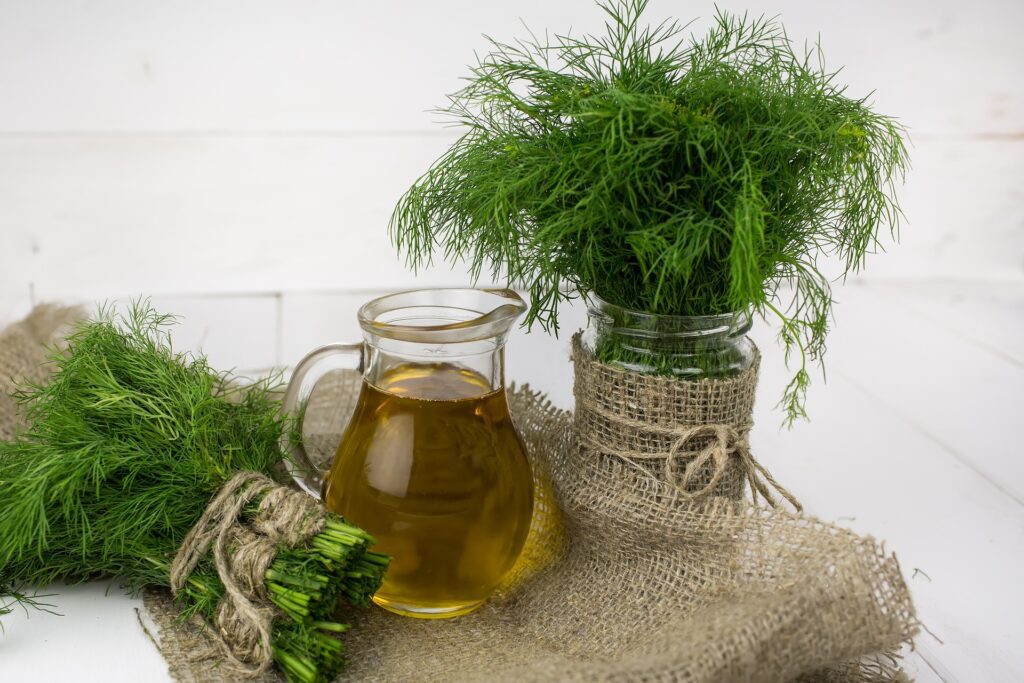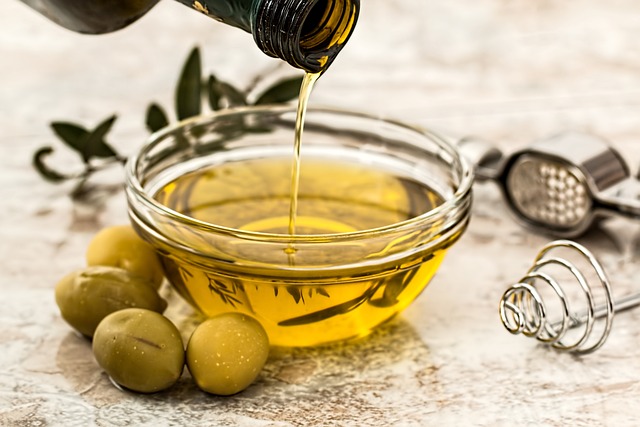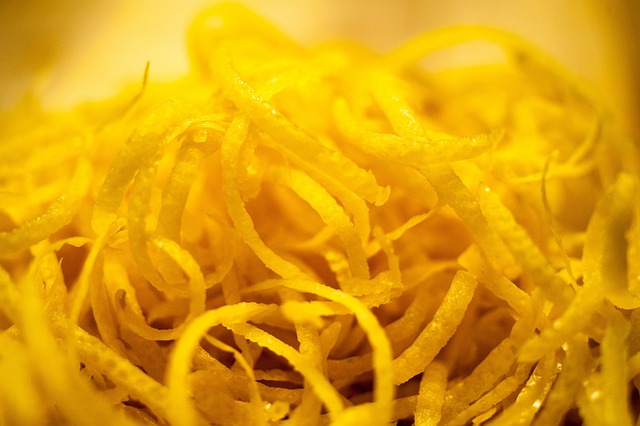Are you looking for a new and delicious way to preserve your herbs this summer? Well, look no further than dill pesto! This easy-to-make dill pesto is perfect for sandwiches, wraps, or a dip. Not only does it taste amazing, but it’s also really easy to make. Plus, it’s a great way to add some extra nutrients to your diet. So what are you waiting for? Give this recipe a try today!

The dill plant is a delicate green herb with feathery leaves and small white flowers. It’s an annual, so you’ll only find it in the grocery store or your garden for a few months each year. But when you find it, snatch it up! Dill is one of my favourite herbs to use in pesto, and dill pesto is an overlooked way to use and enjoy it.
A few reasons why you should make dill pesto
This pesto is a versatile condiment that can be used on a variety of dishes. It is easy to make and can be made with simple ingredients.
Dill pesto has a unique flavour that can add flavour to a meal, and it can be used on pasta, pizza, chicken, fish, or vegetables. The possibilities are endless!
So next time you’re in the mood for something new, give dill pesto a try.
Making this pesto
Dill pesto is a delicious and versatile condiment that is perfect for adding a touch of flavour to meals. Making dill pesto is surprisingly simple, and only requires a few ingredients. You gather fresh dill leaves, wash them and chop them up.
Then, add the dill to a food processor along with garlic, olive oil, lemon juice, salt, and pepper. Pulse the ingredients until they are well combined and the dill is finely chopped. This dill pesto sauce can be used immediately or stored in the fridge for later use.
You can preserve pesto by freezing it in ice cube trays, glass jars, or other freezer-safe containers. Pesto will last in the freezer for three to six months.
Useful TIPS for making dill pesto

- Start with good-quality olive oil. As this will be the base of your pesto, you want to use an oil that has a nice flavour.
- Use fresh dill instead of dried dill for a brighter, more robust flavour.
- Add the fresh dill to the olive oil. The dill should be chopped finely so that it mixes well with the oil. It’s the interplay of these two main characters that makes this sauce great; supported by the other ingredients.
- You may want to consider adding some grated Parmesan cheese to the dill and olive oil mixture. The cheese will add a nice richness and tanginess to the pesto.
Personalise your green sauce
When it comes to dill pesto, there are many ways to personalise the flavour. Here are a few suggestions:
1. Partner with another herb for a personalised variation e.g with parsley.
2. Swap out the walnuts for another type of nuts, such as almonds or pistachios.

3. Add a zesty, fresh kick with some freshly grated lemon zest.
4. For a touch of sweetness, try adding a half teaspoon of honey.
5. If you like your pesto on the spicy side, add a pinch of cayenne pepper or chilli powder.
Of course, these are just a few ideas – feel free to experiment and find the combination that you like best!
A few ways to enjoy your pesto
Dill pesto is a versatile condiment that can be used in a variety of dishes. Here are a few ways to use dill pesto:
1. This pesto sauce makes a great spread for sandwiches and wraps. Try it on a turkey and cheese sandwich, or use it as a dipping sauce for chicken nuggets.
2. Give your pizza a flavour boost by adding dill pesto to the top. It’s especially good on a pepperoni and sausage pizza, mmm!
3. Stir this pesto into your favourite pasta for an easy and delicious meal. Try it with penne, fusilli, or rigatoni etc.
4. Use it in place of regular salad dressing for a flavorful change of pace. It’s especially good on green salads with crisp ingredients like Romaine lettuce, cucumbers, and radishes. You can also add a spoonful to your regular salad dressing.
5. This herb pesto makes a great dip for fresh vegetables or chips and crackers. Try serving it with carrot sticks, celery sticks, or pita or corn chips.
6. Stir through steamed vegetables to elevate this meal to another level.
7. It excels as an accompaniment to fish, be it steamed, fried or baked.
Dill pesto is a flavorful and versatile condiment that can be used in a variety of dishes. It is also a really easy way to extend your enjoyment and use of this herb well beyond its growing season. If you’re looking for a new way to enjoy dill, I highly recommend giving this recipe a try.
And if you’re feeling adventurous, feel free to experiment with the addition of complimentary herbs and spices to create your unique spin on this classic dish and make it your signature herb sauce.

Dill pesto recipe
Equipment
- Chopping board and knife
- Food processor or blender
- Clean sterilised jar(s) +/- freezer-safe containers.
Ingredients
- 1 cup dill, , tightly packed
- ½ cup walnuts
- ¼ cup olive oil
- 2 cloves garlic
- 1 lemon, juiced
- salt
- pepper
Instructions
- Preheat the oven to 180 degrees Celcius.
- Spread the walnuts on a baking sheet and roast for 8-10 minutes, until lightly browned. Set aside to cool.
- In a food processor, combine the dill, walnuts, olive oil, garlic, lemon juice, salt and pepper. Pulse until a thick pesto forms.
- Taste for seasoning and adjust as needed.
- Serve with your favourite dish or store in an airtight container in the fridge for up to a week.
- You can also freeze this sauce in freezer-safe containers or for even greater convenience, in an ice-cube tray. You can remove the frozen cubes and store in a zip lock bag if the tray is needed again.
Notes
- Start with good-quality olive oil. As this will be the base of your pesto, you want to use an oil that has a nice flavour.
- Use fresh dill instead of dried dill for a brighter, more robust flavour.
- Add the fresh dill to the olive oil. The dill should be chopped finely so that it mixes well with the oil. It’s the interplay of these two main characters that makes this sauce great; supported by the other ingredients.
- You may want to consider adding some grated Parmesan cheese to the dill and olive oil mixture. The cheese will add a nice richness and tanginess to the pesto.
Personalise your green sauce
When it comes to dill pesto, there are many ways to personalise the flavour. Here are a few suggestions: 1. Partner with another herb for a personalised variation e.g with parsley. 2. Swap out the walnuts for another type of nuts, such as almonds or pistachios. 3. Add a zesty, fresh kick with some freshly grated lemon zest. 4. For a touch of sweetness, try adding a half teaspoon of honey. 5. If you like your pesto on the spicy side, add a pinch of cayenne pepper or chilli powder. Of course, these are just a few ideas – feel free to experiment and find the combination that you like best!A few ways to enjoy your pesto
Dill pesto is a versatile condiment that can be used in a variety of dishes. Here are a few ways to use dill pesto: 1. This pesto sauce makes a great spread for sandwiches and wraps. Try it on a turkey and cheese sandwich, or use it as a dipping sauce for chicken nuggets. 2. Give your pizza a flavour boost by adding dill pesto to the top. It’s especially good on a pepperoni and sausage pizza, mmm! 3. Stir this pesto into your favourite pasta for an easy and delicious meal. Try it with penne, fusilli, or rigatoni etc. 4. Use it in place of regular salad dressing for a flavorful change of pace. It’s especially good on green salads with crisp ingredients like Romaine lettuce, cucumbers, and radishes. You can also add a spoonful to your regular salad dressing. 5. This herb pesto makes a great dip for fresh vegetables or chips and crackers. Try serving it with carrot sticks, celery sticks, or pita or corn chips. 6. Stir through steamed vegetables to elevate this meal to another level. 7. It excels as an accompaniment to fish, be it steamed, fried or baked.Nutrition
Nutritional Disclaimer
All nutritional information is an estimate only, based on third-party calculations derived from an online nutritional calculator, Spoonacular API. The data provided is a courtesy and should not be considered a guarantee or fact. Each recipe and nutritional value will vary depending on the ingredients and brands you use, your measuring methods and portion sizes. For accurate results, we recommend that you calculate the nutritional information yourself, using a preferred nutritional calculator or advice from a nutritionist, based on your ingredients and individual processes.